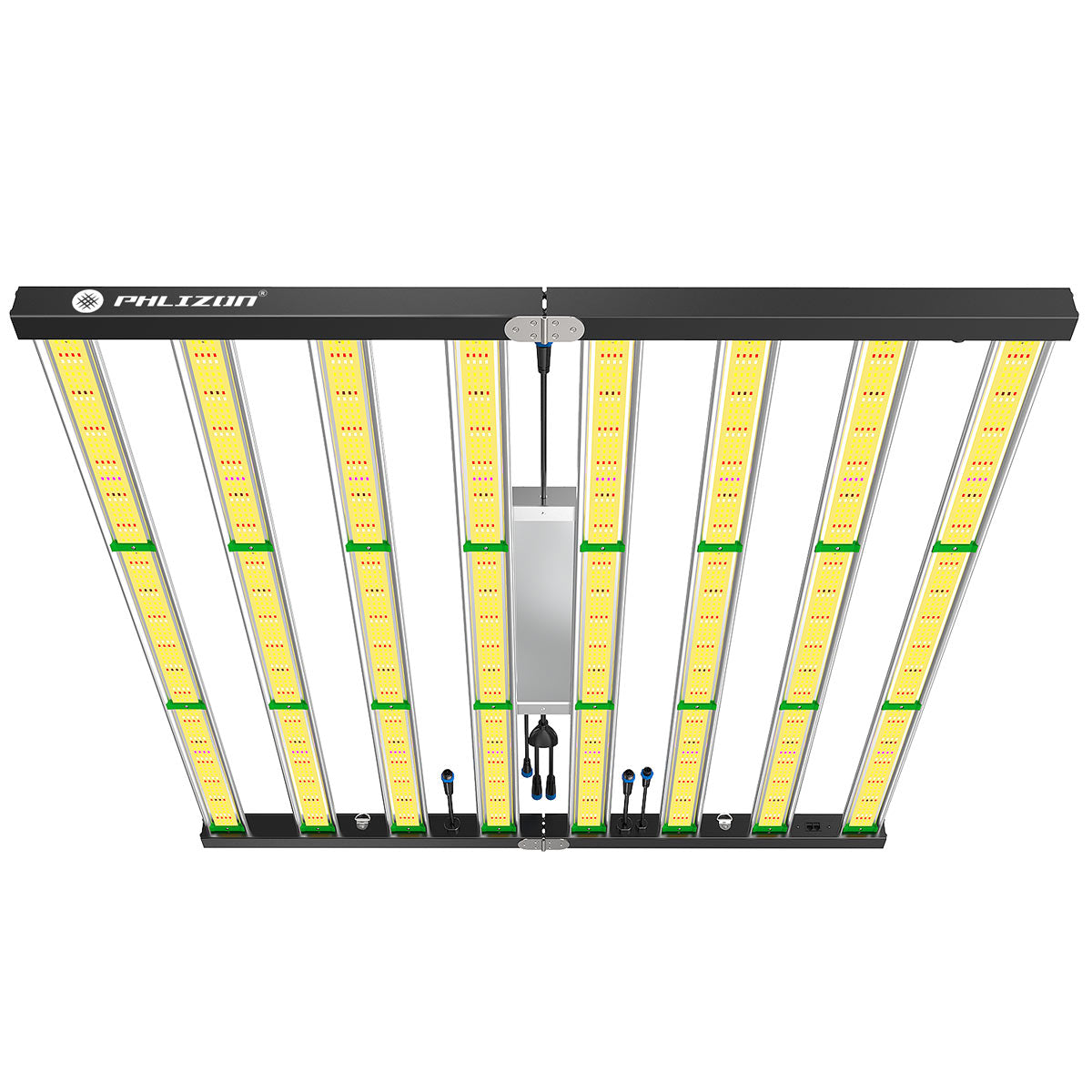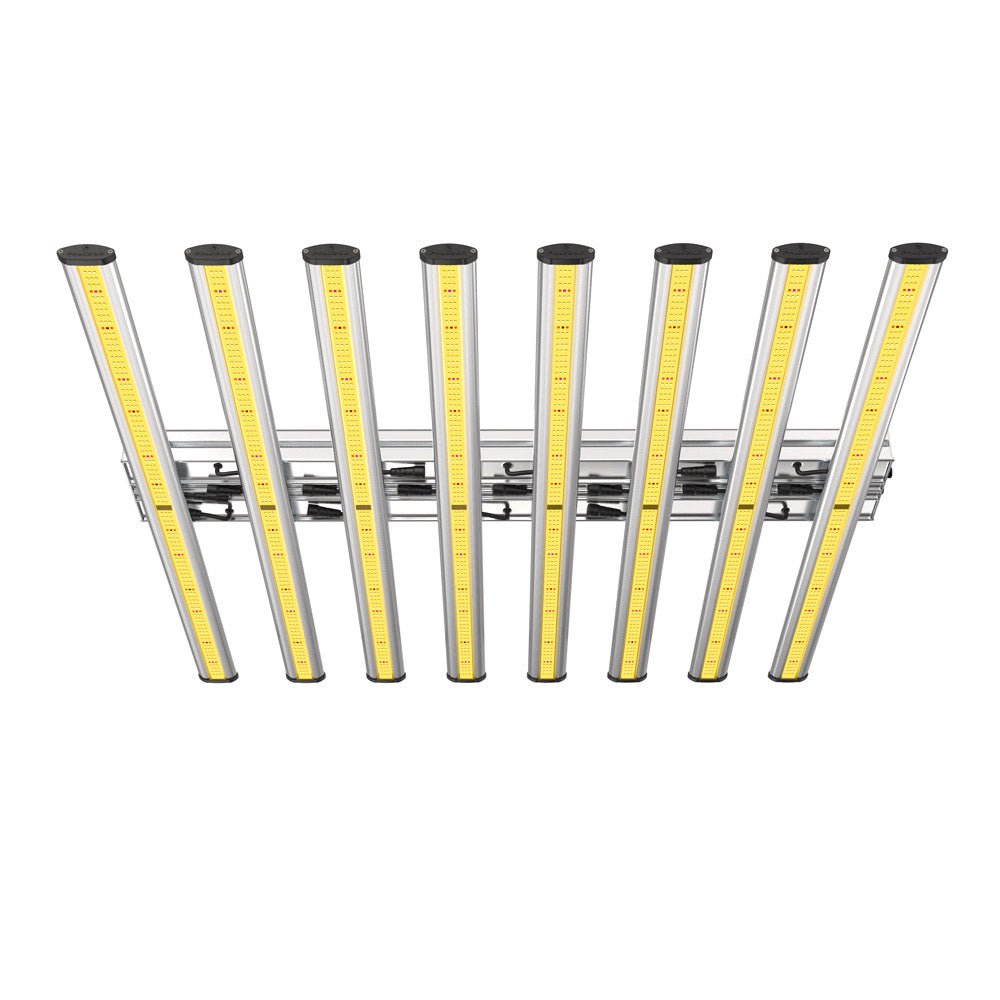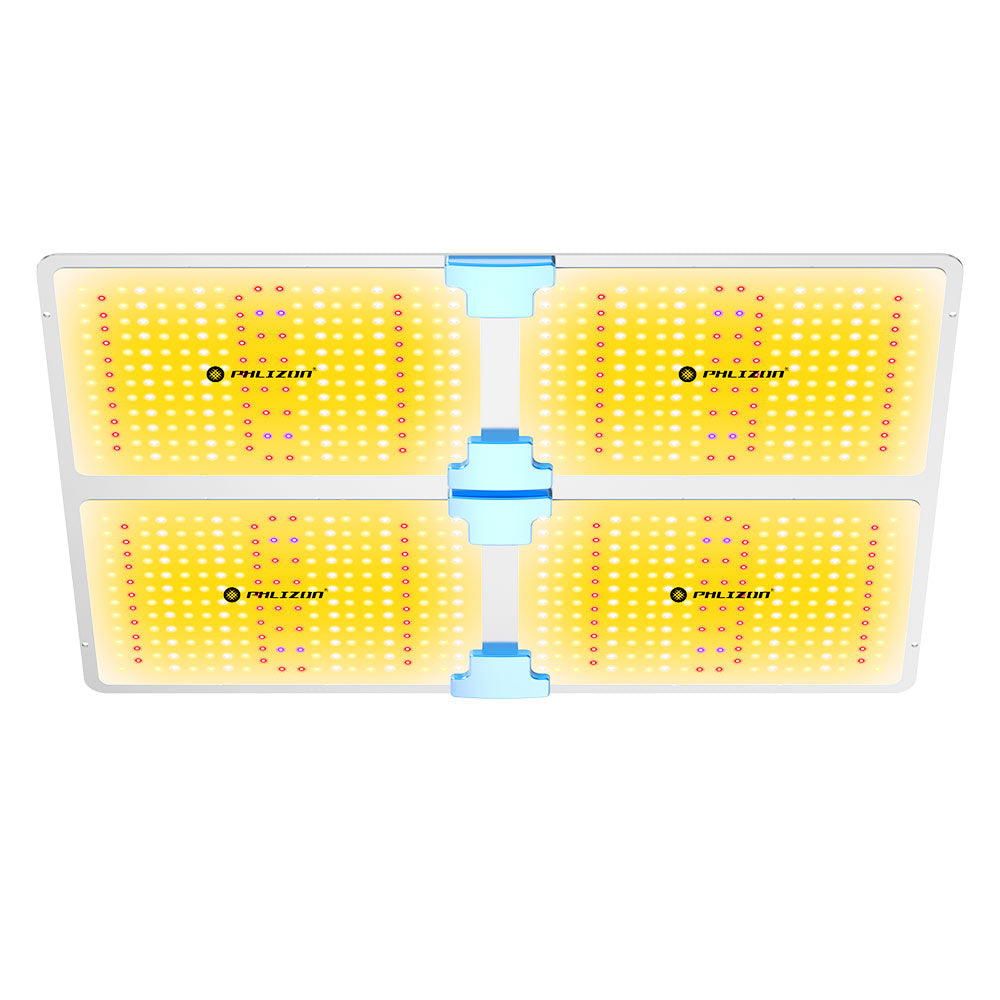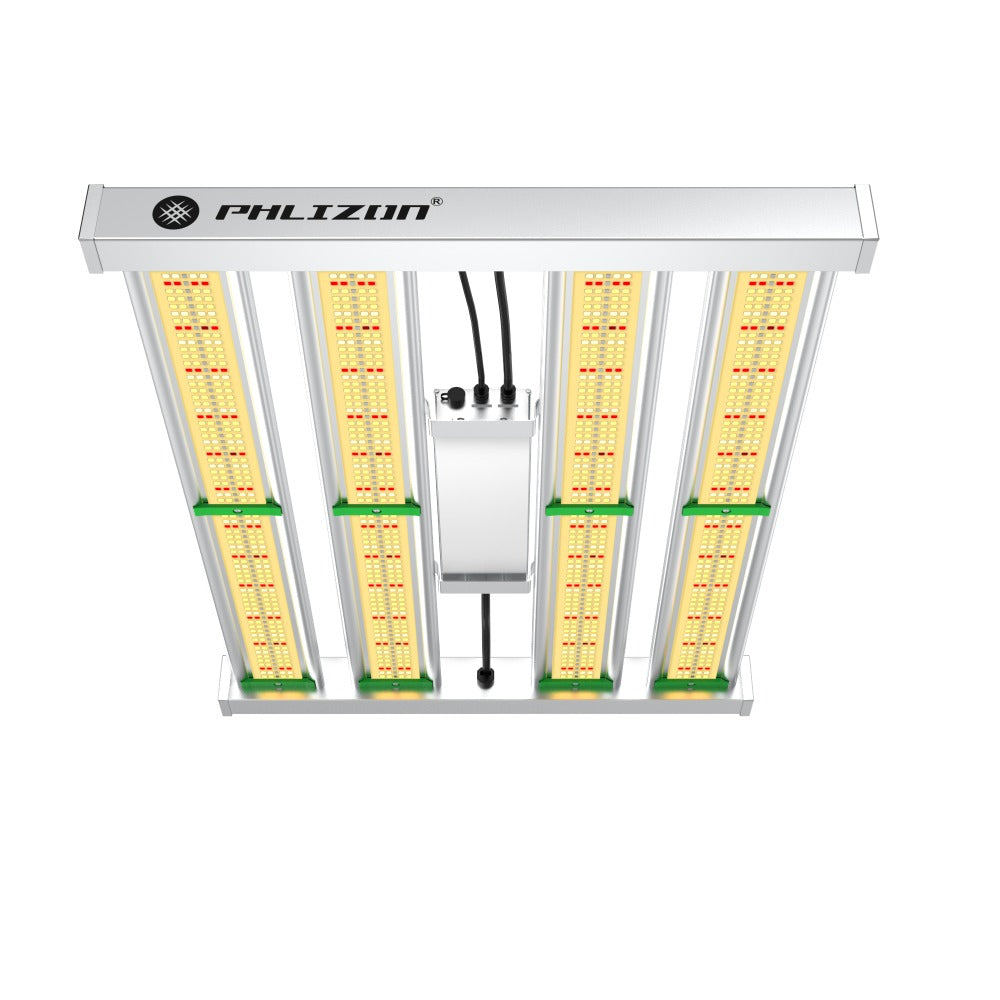Menu
Do LED Strip Lights Help Plants Grow?
Are you thinking about using affordable LED strip lights as a replacement for professional LED grow lights? If so, you’re not alone — LED strips are a budget-friendly, easy-to-install option that can provide consistent lighting for your plants. But the question is: can they actually work as grow lights?
In many cases, yes. LED strip lights are not only flexible — making them ideal for smaller grow spaces — but they’re also significantly cheaper than full-spectrum LED grow lights. While they may not offer the same power or spectrum precision, they can still help your plants thrive, especially for beginner or low-maintenance setups.
What Are LED Strip Lights?
LED strip lights are a versatile and popular LED lighting source. These lights use long strips of LED bulbs to provide bright light with low energy consumption. They're often used in residential and commercial environments to provide accent lighting or supplemental lighting where needed.
LED strip lights can be used as grow lights if they produce sufficient brightness and a color spectrum to meet the needs of your plants. Generally speaking, these types of LEDs don't produce an intense white light like other forms of LED growth lights. Instead, they emit softer colors such as blue, green, pink, yellow light, etc. That said, some of the more powerful models may offer sufficient lumens output to facilitate healthy plant growth without the need for additional supplementation from another form of light bulb.
Advantages of Using LED Strip Grow Lights
LED strip lights have essentially replaced all other solutions for indoor plant growth, and this is because of the excellent range of advantages they provide. Advantages that neither hobbyist projects nor industrial-scale projects can do without.
- Energy efficiency: LED grow light strips use substantially less energy compared to traditional lighting systems such as HPS and MH lights. This means that LED grow light strips are not only cost-effective but also lower your energy bills.
- Spectrum control: LED lights allow growers to customize the light spectrum according to the needs of their plants. This is because LED strip lights can produce a wide range of wavelengths of light that are optimal for plant growth and development. This includes blue light (400-500 nm), which is important for vegetative growth, and red light (600-700 nm), which is important for flowering and fruiting. Some LED full spectrum lighting also includes UV and IR lights, which have benefits for certain plant species.
- Long lifespan: LEDs have a longer lifespan compared to traditional lighting systems, such as HPS or MH lights. This means that they require less frequent replacement and maintenance. LED strip lights can last up to 50,000 hours, making them an excellent option for those who want a no-fuss indoor garden.
- Heat reduction: LEDs produce less heat compared to traditional lighting systems. This means that they can be placed closer to plants without risking heat damage. It also reduces the need for additional cooling equipment, which was previously necessary for temp-sensitive plants.
-
Environmentally friendly: Grow light strips are free of toxic substances like mercury, which can harm the environment when disposed of improperly. They are also recyclable, which further reduces their environmental impact.
LED Strip Lights VS LED Grow Lights
You should know that these are two different kinds of LED lights with other uses and functions.
Spectral Output
- Color-changing tape light can provide a wide range of colors for different lighting effects, but may not have the specific spectral output needed for plant growth.
- LED full-spectrum plant lights are designed to provide specific wavelengths of light that are best suited for plant growth and can easily support a grow room without any other light source.
Light Intensity
- LED grow lights are usually much brighter than strip lights because they need to provide enough light for the photosynthesis of the plants.
- LED strip lights are designed for decorative purposes and may not be as bright considering that they are integrated into human life.
Heat Output
LED grow lights generate more heat than indoor LED lighting strips because they have a higher intensity and specific spectral output. This may require additional cooling measures to prevent damage to the plants.
Design
- LED grow lights are designed for growing plants. They have features such as adjustable spectral output and intensity, timers, dimming functions, and a variety of grow light styles.
- LED color strips are designed for decorative lighting applications. They have features such as remote control and color-changing options.
Cost
- LED plant lights are more expensive than HPS lights due to their special design and features. The input is always proportional to the gain.
- No doubt, that is certainly more expensive than the color LED light bar, much more expensive.
Different Types Of LED Strip Lights
LED strip lights are a type of light-emitting diode (LED) that comes in many different shapes, sizes and colors. There are two main types of LED strip lights: white LED and full-spectrum grow light. White LED strips emit a bright light with good color rendering, making them ideal for general lighting in the kitchen, office or bedroom illumination.
Full-spectrum light provides a better quality light with higher efficiency than traditional fluorescent bulbs and are commonly used as grow lights because they produce an intense source of light across the visible light spectrum. Standard LED strip lights are available in a variety of lengths and widths, allowing you to customize your own installation without having to purchase large amounts of additional hardware needed to build larger units like those found in fluorescent lamp or HID lighting systems.
Are LED Strip Lights Sufficient to Support Plant Photosynthesis?
LED strips used for decoration, are usually very low power and do not consume a lot of electricity. But this also means that they do not emit a lot of light. Not enough to stimulate photosynthesis in plants.
Of course, different plants require different amounts or intensities of light. The term used to describe the amount/intensity of light is PPFD.
- Microgreens are one of the least light-demanding edible plants you can grow, requiring about 100-200 umol/m2/s of PPFD.
- Things like tomatoes, peppers, and cannabis will require up to 600 umol/m2/s PPFD.
- If your LED strip consumes 20W, it will probably only output about 25-50 umol/m2/s, even if it is squeezed together.
Most grow lights try to emit a natural spectrum that is as close to the sun. The LED lights used for parties are too weak, and color filters make them even weaker to be LED grow lights.
Those kinds of lights are designed for entertainment and have sharp spectral peaks. If you want artificial light to grow your plants for the best results, spend heavily on lights that are spectrally rich and designed for growth to get the job done.
The Role Of Wavelengths In Grow Lights
LED strips are another popular type of light used for indoor plant growing. These strips come in a variety of colors including blue, white, and green. Blue wavelengths have higher amounts of photosynthetically active radiation (PAR), which helps seedlings and succulents grow.
The other colors, such as white, green and red, provide additional spectrums that can promote plant growth by providing more nutrients or allowing plants to stay exposed longer during periods of darkness if needed. Combining all of these colors gives us what’s known as full-spectrum lighting, which emits a range of visible and non-visible light wavelengths and mimics the energy from sunlight.
Benefits Of Using LED Strip Lights For Growing Plants
The advantage of using LED strip lights is that they offer multiple levels of brightness, adjustable color temperatures and a range of specialty effects such as dimming capabilities or motion sensors. Their slim profile makes them perfect for installation in tight spaces where regular fixtures may not fit due to size constraints.
They make it possible to control light exposure, as well as the color and output of the light. This allows growers to customize their lighting setup and achieve better results than with regular white or fluorescent lights. The flexibility of strip LEDs also means that they can be used both as supplemental light sources or as brighter primary lights when more intense illumination is required.
With a wide range of colors of light available, they can even provide unique color combinations that would otherwise be difficult to recreate with other types of light solutions. In addition, LED strips are very energy efficient and cost-effective compared to traditional light, making them ideal for anyone looking for ways to save money on their indoor gardening projects without sacrificing quality plant growth.
Ways to Use LED Grow Light Strips to Grow Plants
Grow light strips are more compact and lightweight compared to traditional lighting systems. This makes them highly versatile, used both in small and large spaces, and can be set up in a variety of ways. If, after hearing all its advantages, you’re wondering how you can use grow light strips to grow plants indoors, this section is for you. We’ll go over a variety of practical setups you can use with minimal effort.
1. Ceiling Mounted LEDs
Ceiling-mounted LED strip lights are a popular choice for indoor plant cultivation. These lights are hung from the ceiling and provide overhead lighting for your plants. One of the primary advantages of ceiling-mounted LED grow lights is their energy efficiency. LEDs are known to use less energy compared to other types of lighting systems, but even compared to other LED setups, LEDs mounted on the ceiling are in an optimal position to offer lighting to the entire space, which means you need to use fewer strips.
2. Rack-Mounted LED Lighting
Rack-mounted LED grows lights are another popular choice for indoor plant cultivation. These lights are mounted on a rack system, providing vertical lighting for your plants.
Rack-mounted LEDs offer a range of advantages that make them preferable over the other options:
- Space saving: By providing vertical lighting, they allow growers to maximize their growing space. This is especially useful for smaller spaces.
- Light penetration: vertical lighting provided by rack-mounted lights can penetrate deeper into the canopy of your plants, resulting in more efficient use of light and increased yields.
- Flexibility: While, like ceiling-mounted lights, they can be adjusted to different heights to provide different light intensities for different stages of a plant’s growth. LEDs on each individual rack can also be adjusted as needed, which offers even greater flexibility in terms of positioning and coverage. If you’re growing more than one light-sensitive plant, rack-mounted LEDs will be the way to go as you adjust the intensity of the light fixture for each plant.
3. Mobile LED Lights
Mobile LED grow lights, as their name suggests, are mobile and not fixed to any specific fixture. These lights are mounted on wheels or a movable stand, which means they can be moved around the planting space as you desire.
The main advantage of mobile LEDs is their flexibility. Unlike ceiling-mounted or rack-mounted lights, mobile lights can be easily moved around. This allows growers to customize their lighting setup based on the needs of their plants. For example, if a certain area of the plant canopy requires more light, you can easily move the mobile light to that area.
4. Supplemental LED Lighting
Supplemental LEDs are a type of lighting system used in addition to natural sunlight or other primary light sources. These lights provide additional light to indoor plants, promoting growth and development where other sources of light are insufficient. A full spectrum light supplementing natural sunlight can induce impressive growth in a variety of plants.
Tips For Growing Plants With LED Strip Lights
Here are some tips on how to successfully use LED strip lights for your plants:
- Choose the right type of strip light: you need to choose one that emits enough visible spectrum light to cover the area you need. As a rule of thumb, consider 1 foot of LED per bulb or 2 feet per metal halide bulb.
- Consider using a seedling heater mat: this is useful if you are working with delicate seedlings to provide heat and ensure adequate light exposure.
- Adjust the angle of the light strip: it should close enough to reach maximum intensity without burning your plants.
- Consider installing an alarm clock or timer near your plants: this will ensure that they receive an equal amount of day and night light each day.
-
Keep track of any changes you see in your plants: whether you see positive or negative changes, analyzing plant growth and health will help you make necessary adjustments.
Frequently Asked Questions
1. Can any LED strip light be used to grow plants?
Not really. While all LED strip lights emit light, not all of them provide the specific wavelengths plants need. Decorative LED strips might look nice, but they usually lack the red and blue light that supports photosynthesis. For the best results, use full-spectrum LED grow lights designed for plants.
2. What color LED light is best for plant growth?
Plants mainly benefit from blue and red light. Blue light supports leaf and stem growth, while red light encourages flowering and fruiting. A balanced combination—often found in grow-specific LED strips—is ideal for healthy development.
3. How close should LED strip lights be to the plants?
It depends on the strength of the lights. For most LED strip grow lights, keeping them 6 to 12 inches (15 to 30 cm) above your plants is a good start. Too far away and the light might be too weak; too close and it might stress the plant. Adjust based on how your plants respond.
4. Can LED strip lights replace sunlight completely?
In some indoor setups—yes, especially if you're using high-quality grow lights that mimic the sun’s full spectrum. However, natural sunlight is always ideal when available. LED strips are best used to supplement light or replace it in spaces with little or no natural sun.
5. How many hours a day should I run LED strip lights for my plants?
Most plants do well with 12 to 16 hours of light per day, depending on the species. Use a timer to simulate a natural day/night cycle, and make sure they also get some darkness for rest.
Featured blog
- Choosing a selection results in a full page refresh.


















